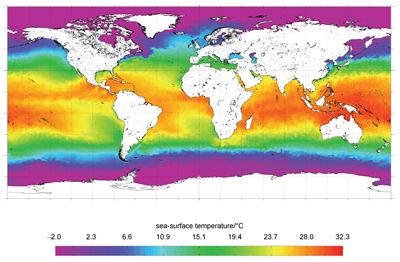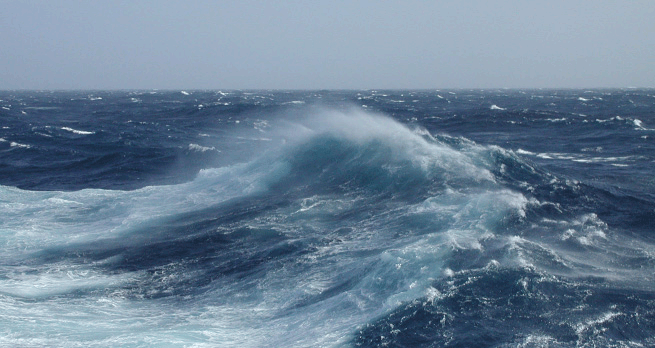3.3.1 The surface temperature
The only significant source of energy heating the oceans is from the absorption of solar radiation arriving at the surface. The low albedo of water means that most solar radiation is absorbed to heat the surface - and generally, the greater the intensity of the incoming solar energy, the warmer the water (Figure 9).

In general, the sea-surface temperature (SST) is colder at high latitudes and warmer in the mid-latitude and equatorial regions, but there are exceptions. For example, the North Atlantic coast of Africa has an SST of ~15 °C compared with >28 °C at the same latitude on the other side of the Atlantic. Note the light blue along the northwest European coast (see Figure 1), and the green 'tongue' of water extending up the west coast of South America. Clearly, there is more to the surface temperature distribution than simply incoming solar energy. The heat must be being redistributed.
